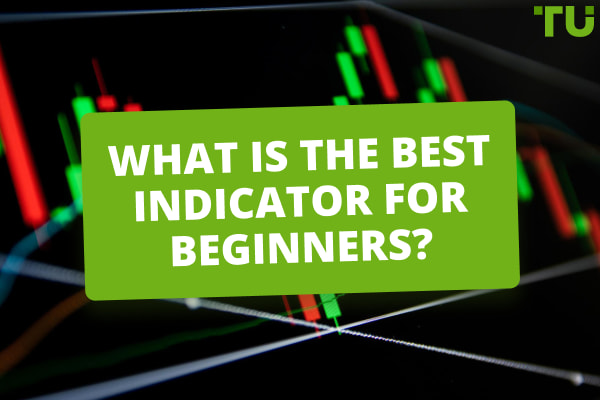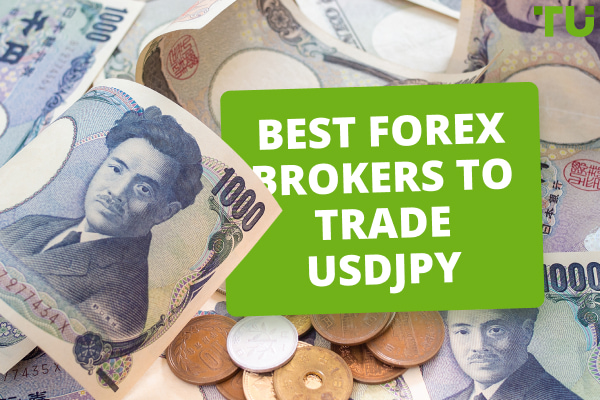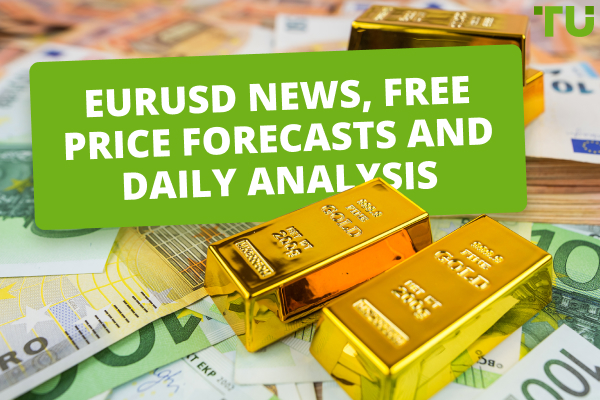How Can I Trade a 50-day MA?
The 50-day moving average (50-day MA) is an indicator used mostly by traders using medium-term strategies. The 50-day MA is a ‘faster’ moving average that is most frequently used together with ‘slower’ 100-day and/or 200-day moving averages. In this article we will discuss the differences between the main types of moving averages, how to trade a 50-day MA, main recommendations and strategies for working with this indicator.
What is a 50-day MA?
The 50-day Moving Average is one of the most frequently used technical indicators by investors and traders that allows them to identify a trend or its reversal.
The 50-day moving average is based on the closing prices of an instrument in the past 50 trading sessions, their averaging, and then plotting that average price over time. The 50-day MA is often used to track stock prices and also for stock indices, currency pairs and commodities.
50 MA vs 50 EMA – Pros and Cons
The 50-day МА is a simple moving average, i.e. a line drawn through the average prices of an instrument over a certain (in this case 50 days) period of time. It reacts relatively slowly to price changes, which is why it is mostly used by medium-term traders.
The 50-day ЕМА is an exponential moving average, with latest prices taking into account to a larger extend for its plotting, which makes it ‘faster’ than the SMA. The following formula is used for the calculation of the EMA: EMA = closing price x multiplier + EMA (previous day) x (1-multiplier).
The ‘faster’ EMA provides a more relevant buy/sell signal. However, by reacting faster to the price changes, this moving average may provide false signals more frequently. Simple Moving Average is not inclined to give false signals, while it is difficult to catch the best price for the entry to traders who use it.
How to trade a 50-day MA?
Just like other Moving Averages with other periods, the 50-day MA is a classic indicator that has been successfully used by experienced traders and investors to determine the current trend in the market, and also, depending on the direction of the trend, to determine the support and resistance areas.
Therefore, on an upward trend, the 50-day Moving Average moves below the price chart, indicating an ascending support line. Therefore, in case it drops down, traders need to open/add long positions. Accordingly, on a downward trend, the 50-MA moves above the price chart and is a descending resistance line, the rollbacks to which are used for opening/addition short positions. Usually, the 100-day MA is used together with the 50-day MA, as you can set Stop Orders above the former.
Using the EUR/USD example, which is currently in the downward trend, you can see clearly how the price chart is moving below the 50-day MA, and after rollbacks towards it, the downward movement renews.

MA50 indicator on the EUR/USD chart
It is quite clear that setting a Stop-Loss order over the 100-day Moving Average in this case is the right decision, and selling during movements towards the 50-day MA is a profitable strategy.
The next example shows an upward trend on the US dollar index.

MA50 indicator on the US dollar index chart
You can clearly see the index price movement above the 50-day moving averages, with the price rebounding during rollbacks towards it. In addition, declines towards the 100-day MA and purchases from it are indicative, with the index continuing its ascent against this background. This confirms the strategy of buying on rollbacks and placing the Stop-Loss orders below the 100-day moving average.
This use of the 50-day MA (together with the 100 MA) is not always reliable, which is why let’s review the next example.

The example of unsuccessful application of MA50
On the DJ30 index chart, during the development of an upward trend, we can see rollbacks towards the 100-day MA along with the movement of the price chart above the 50-day MA, with renewal of growth, which makes it difficult to work using the above strategies, as the breakout of the 100-day MA should mean setting of a Stop-Loss order.
Therefore, the Stop-Loss got triggered, the trader suffered losses, while the index later continued to grow and set new extremes. Therefore, it is also reasonable to use the ‘slowest’ 200-day moving average, as in the case with DJ30, as it can serve as the third support level, below which a long-term trader can place a protective order.
9 Best Forex Signals Providers for TradingThe 50-day MA trading strategies
Regardless of the period of the moving average, the trading strategy using it is quite standard, i.e. traders either trade from the moving average, thereby following the trend, or use the crossovers of moving averages of different periods in an attempt to enter a trade at the trend reversal.
These strategies, which have long become classics, are the golden cross and the death cross. If the 50-day moving average crosses the 100-day MA (and/or 200-day MA) from below to above, the signal is bullish and is called the golden cross. In this case, traders should consider either exiting a short position or opening a long one.
Crossing of a ‘long’ 100-day MA (and/or 200 MA) by the ‘short’ 50-day MA from above to below forms a bearish signal – the death cross, and traders either need to make a decision to exit a long position or open a short position.
Below is an example of the golden cross formation on the Apple chart.

The golden cross formation on the Apple chart
Following the 2018-2019 consolidation, Apple quotes broke out the resistance and started a long-term upward trend. Therefore, trend reversal, in addition to resistance breakout, was confirmed by the crossing of the 50-day MA, 100 MA and 200 MA. The situation was dangerous when the price dropped below the 200-day MA, but it did not cross the 50-day MA, and therefore there was no confirmation of the bearish reversal, and the price once again started moving upwards.
Example of the death cross on the EUR/CHF chart

Example of the death cross on the EUR/CHF chart
Inability of the euro bulls to breakout the resistance at 1.1070-1.1122 caused liquidation of long positions and decline of the pair, which grew into a long downward trend. Crossing of the 50-day MA of the 100-day MA was the first reversal signal, and subsequent crossing of the 200-day MA became a solid confirmation of the trend reversal in the market. As you can see, the following rollbacks both to 100 MA and 200 MA were used to sell, which confirms the importance of the use of all three moving averages.
Bollinger Bands Indicator for MT4 | A ReviewHow to avoid false signals when trading the 50-day MA
The negative thing about ‘faster’ moving averages is a higher probability of formation of false signals, compared to ‘longer’ moving averages. Therefore, it is important to use the 50-day MA together with the 100-day MA and 200-day MA, and additionally other indicators as well, specifically the RSI. A crossover of the MA against the background of strong oversold/overbought, or against the backdrop of a downward/upward RSI, can be a more reliable reversal signal than a crossover without confirmation by another indicator.
Best Brokers 2024

Summary
In conclusion, I’d like to recommend to novice traders to consider such classic indicators as moving averages, while not forgetting about other indicators and also fundamental factors, which are essentially the main drivers of the market trends. It is extremely important for any trader not to rely exclusively on technical analysis, but try to understand what is happening in the world and how the events could impact an instrument.
FAQ
What is a 50-day Moving Average?
The 50-day Moving Average is one of the most frequently used technical indicators by investors and traders to identify a trend or its reversal.
50-day MA vs 50-day EMA - what are the pros and cons?
The 50-day exponential moving average (EMA) is faster compared to the 50-day Simple Moving Average, and therefore it provides a buy/sell signal earlier. At the same time, a ‘slow’ moving average gives a more reliable signal that shows lower probability of being false.
How do I trade using the 50-day MA?
As is the case with other moving averages, the 50-day MA is used by traders to identify the trend and trade the trend, using the rollbacks towards it.
What trading strategies use the 50-day MA?
The main strategies of trading in the markets by using the 50-day moving average include the golden cross, i.e. a crossover of the 50-day MA by a ‘longer’ MA from below to above, which may be a confirmation of the changes of the bearish trend for the bullish trend, and also the death cross – a crossover from above to below, thereby confirming the change of the bullish trend for the bearish one.
Team that worked on the article
Oleg Tkachenko is an economic analyst and risk manager having more than 14 years of experience in working with systemically important banks, investment companies, and analytical platforms. He has been a Traders Union analyst since 2018. His primary specialties are analysis and prediction of price tendencies in the Forex, stock, commodity, and cryptocurrency markets, as well as the development of trading strategies and individual risk management systems. He also analyzes nonstandard investing markets and studies trading psychology.
Olga Shendetskaya has been a part of the Traders Union team as an author, editor and proofreader since 2017. Since 2020, Shendetskaya has been the assistant chief editor of the website of Traders Union, an international association of traders. She has over 10 years of experience of working with economic and financial texts. In the period of 2017-2020, Olga has worked as a journalist and editor of laftNews news agency, economic and financial news sections. At the moment, Olga is a part of the team of top industry experts involved in creation of educational articles in finance and investment, overseeing their writing and publication on the Traders Union website.
Olga has extensive experience in writing and editing articles about the specifics of working in the Forex market, cryptocurrency market, stock exchanges and also in the segment of financial investment in general. This level of expertise allows Olga to create unique and comprehensive articles, describing complex investment mechanisms in a simple and accessible way for traders of any level.
Olga’s motto: Do well and you’ll be well!









